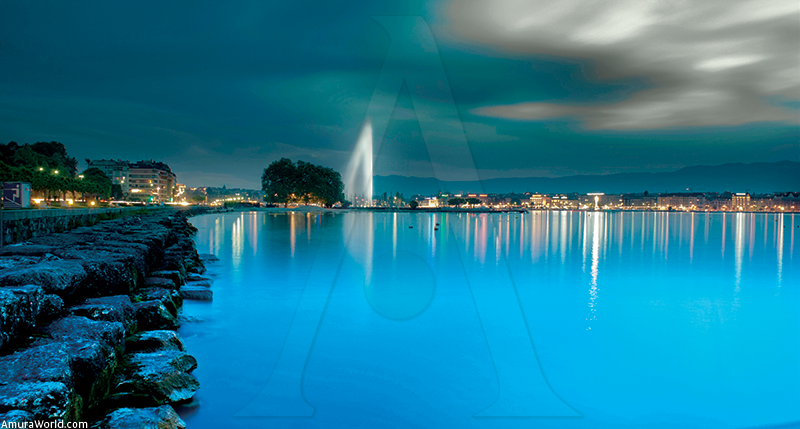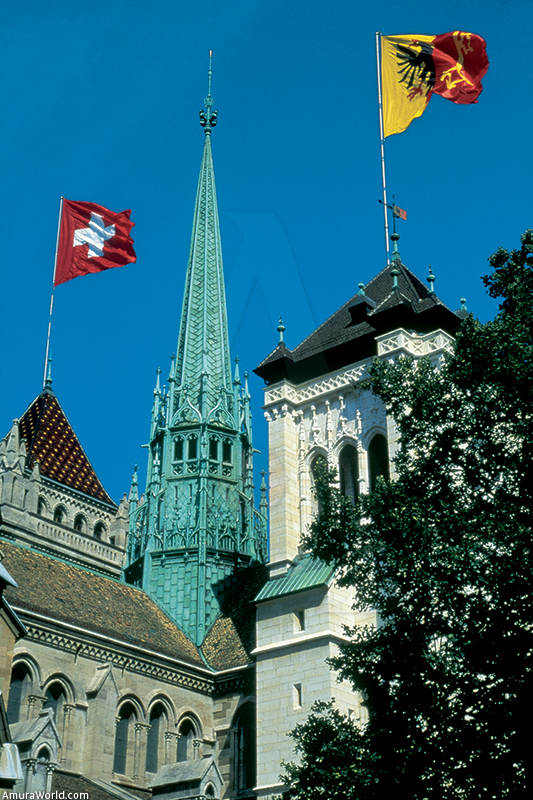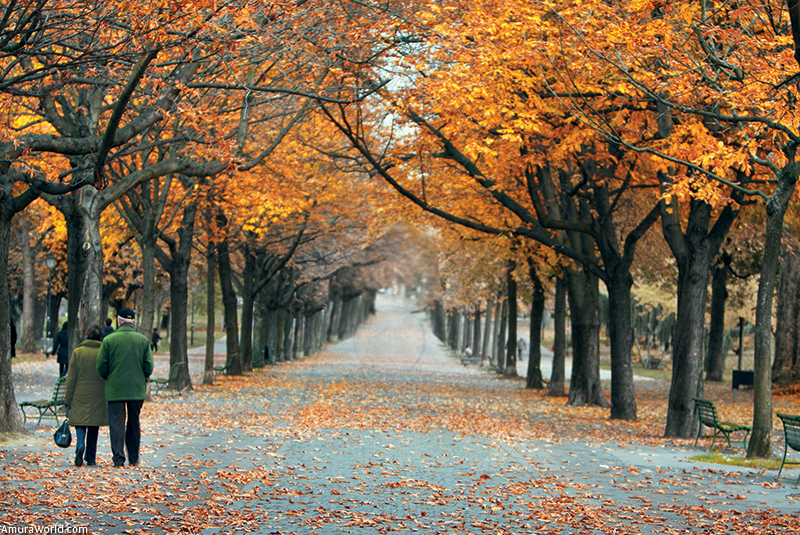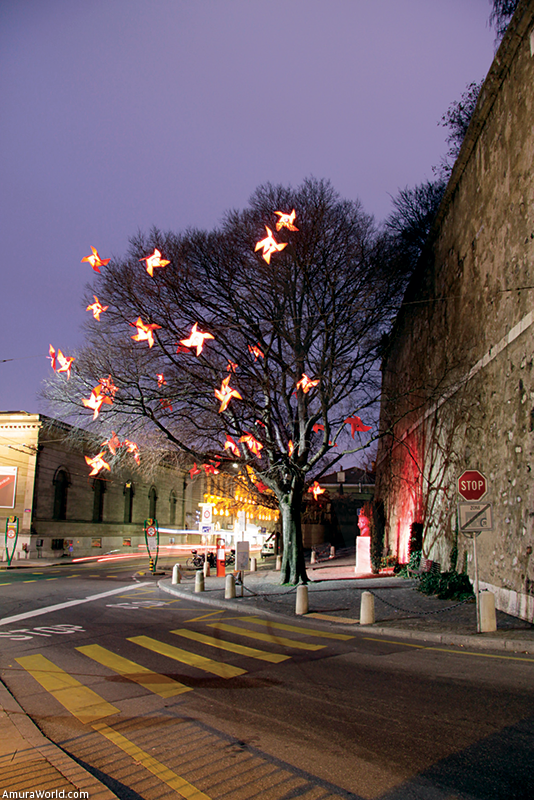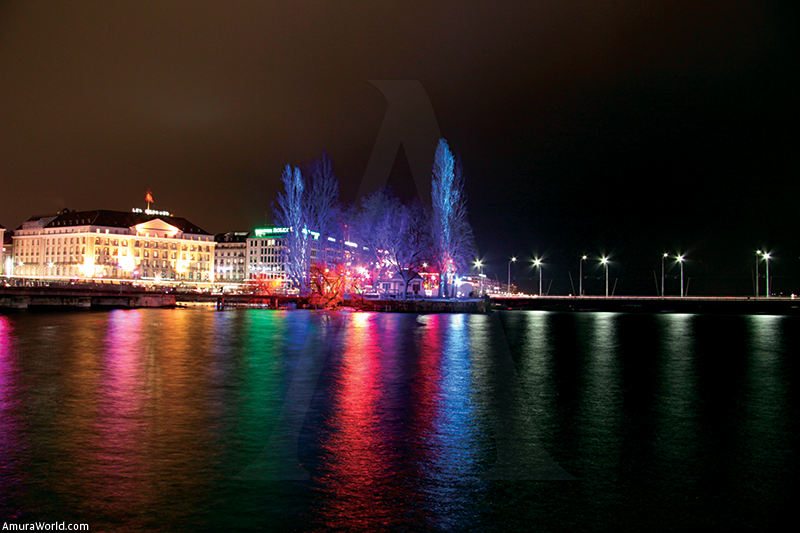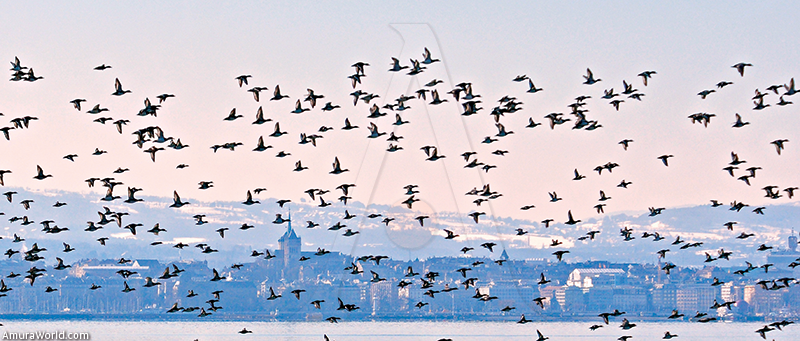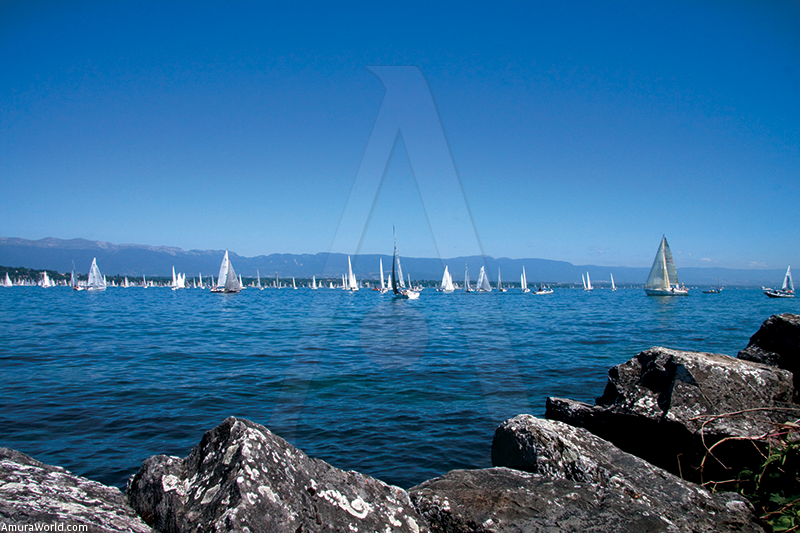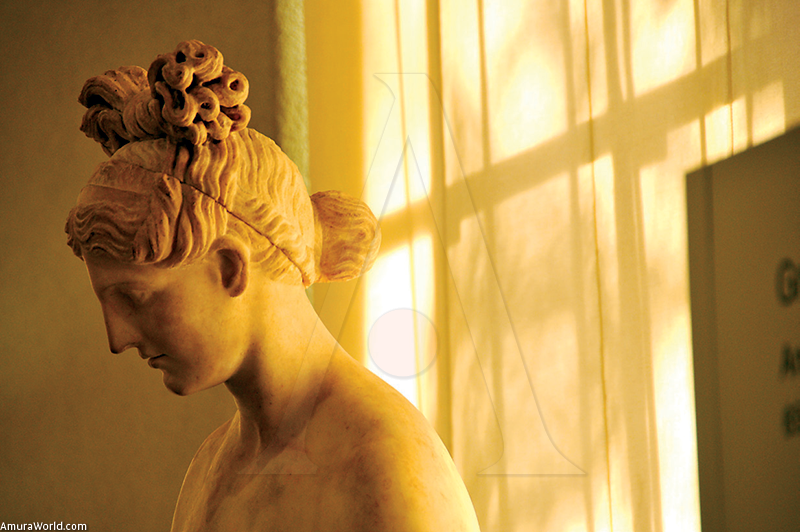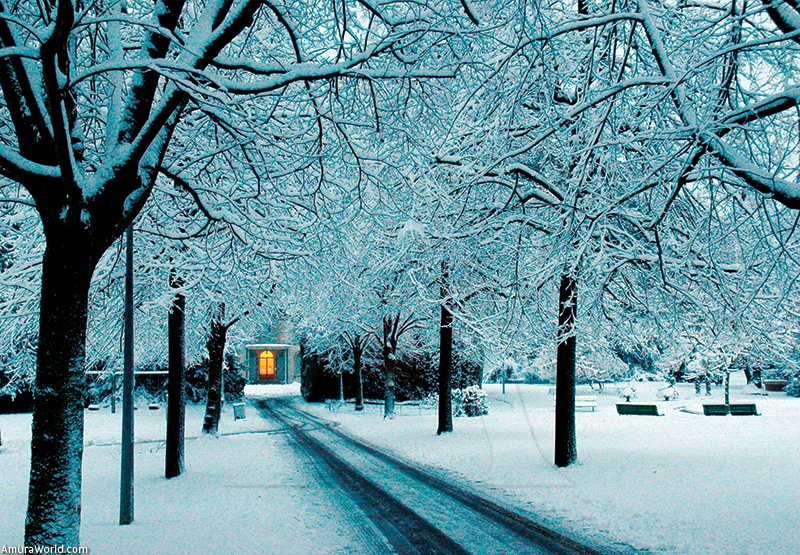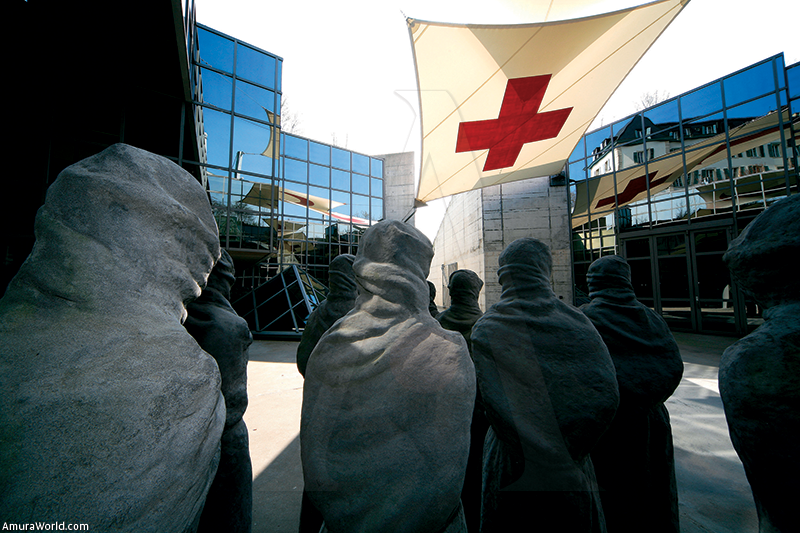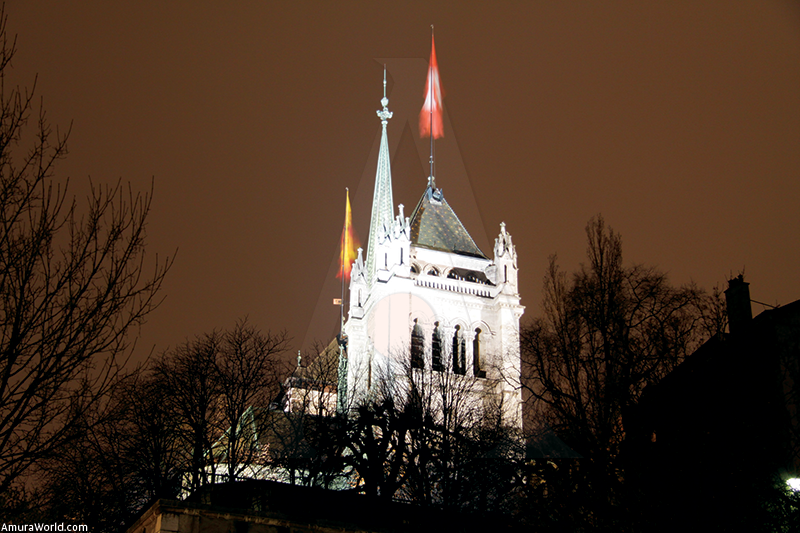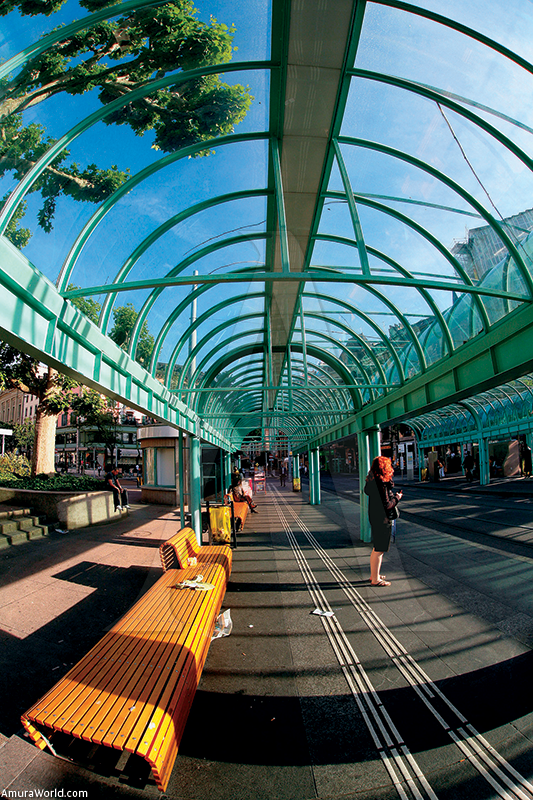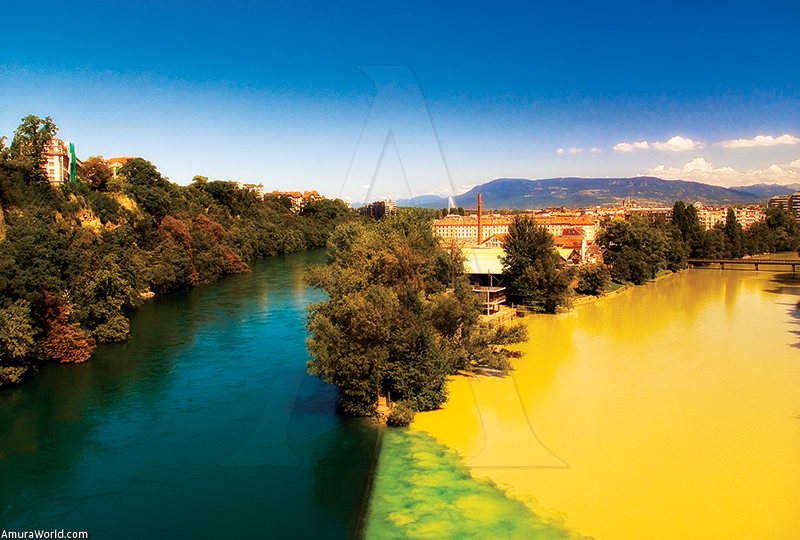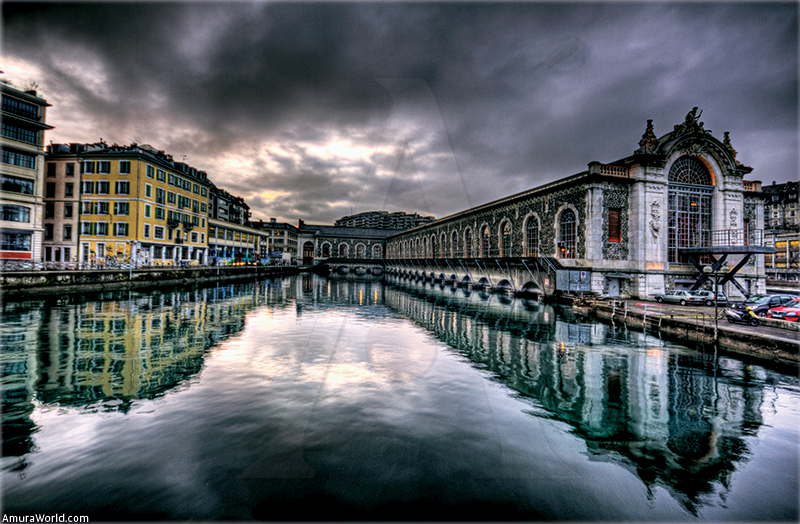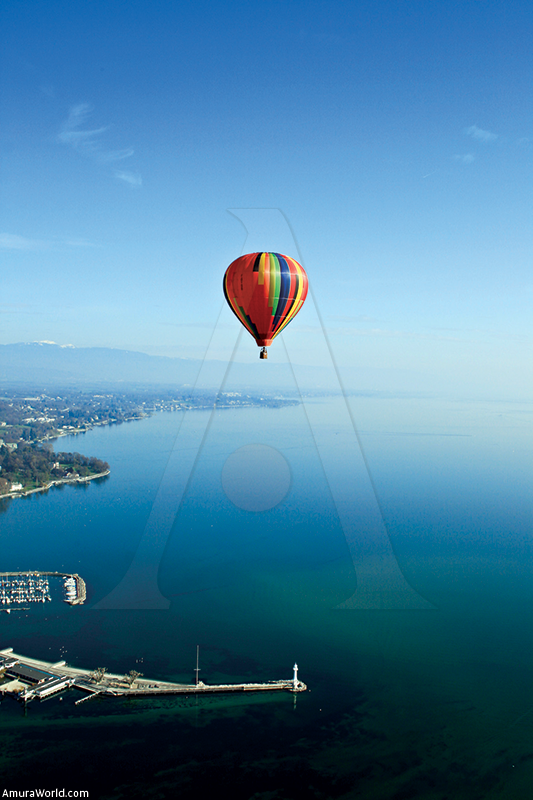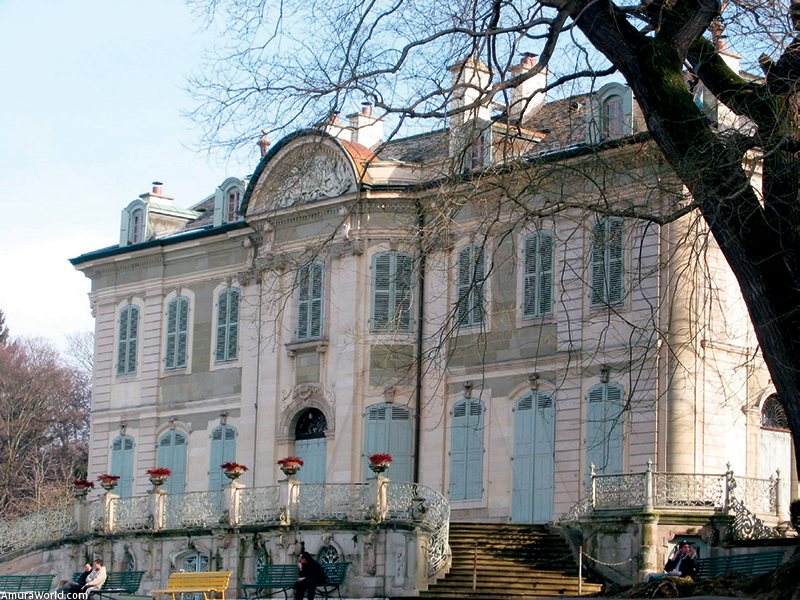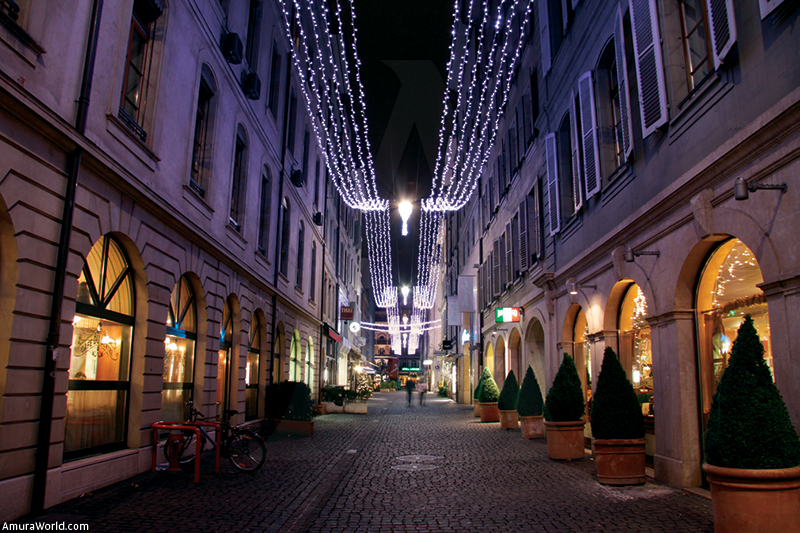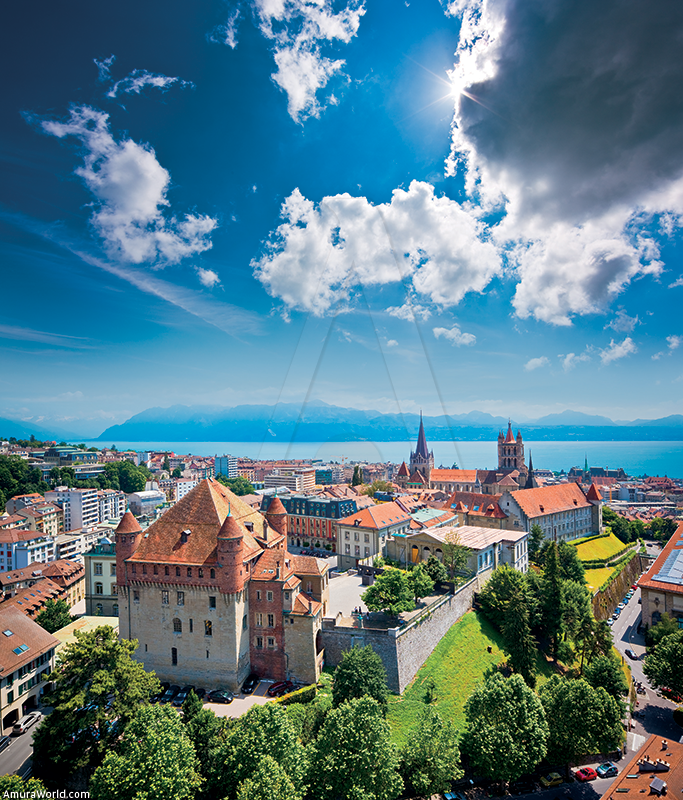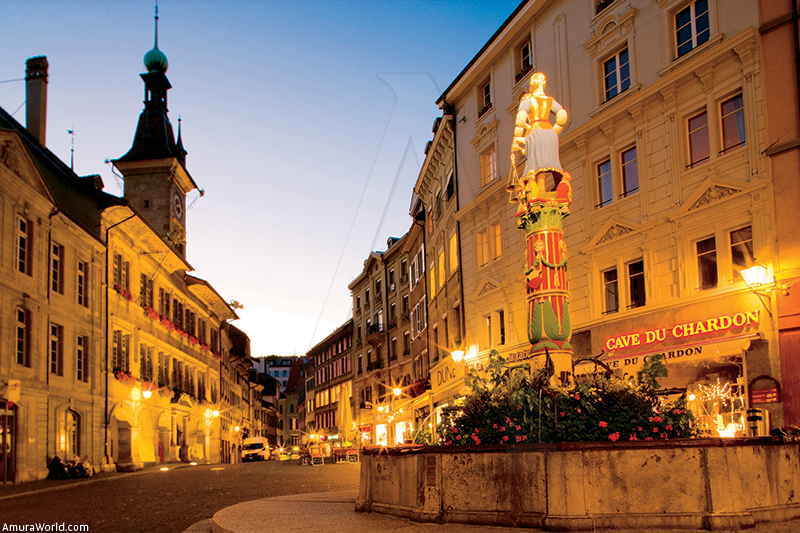{socialbuttons}
Yes! There is a city on the planet that rep- resents an appropriate way the idea of coexistence and tranquility in an urban environment, is Geneva. Bordered by two gentle streams, this beautiful metropolis is the capital of Switzerland and is considered the most cosmopoli- tan city of this European country. Curiously, is also called “the world’s smallest city”, although is the largest within Swiss territory after Zurich.
Geneva’s natural environment is almost heav- enly; the modern buildings are fit harmoniously with mountains and hills that surround them, while the city itself is confined between the waters of the Lake Geneva and the Lake Rhone. The first one is the most relevant of the city. It flows through and divides it into two segments that are popularly known as the Rive Droit, which is located on the right bank of the river and the Rive Gauche, located on the left. This body of water causes the center of the city divided by both sides.
This natural phenomenon is one of the factors that influence that Geneva is consistently recognized as one of the highest cities in social and economic terms, besides appearing in an almost straight into the top 10 of world rankings for qual- ity of life. Like Zürich, is an important financial cen- ter, and stands within the world of watches, jewelry and chocolate industries.
Development in social, economic, religious, among others, is that Geneva has a peaceful history. Although there is evidence that Geneva existed for almost 5000 years b. C. Geneva's history is defined by two historical moments: in 1530, when it won its independence after S00 years as an imperial city, and in 1820, when it joined the Swiss Confederation, which will eventually be established as Switzerland.
During the Protestant Reformation, Geneva so- ciety showed a remarkable religious tolerance, as the first signs of being at the forefront of the social aspect. The ethnic mix, far from inciting margin- alization or discrimination was the basis for the foundation of important scientific research centers. Its academic reputation attracted the attention of families around the world potentates, who began to send their children to the city in order to complete their education. Geneva then became the title of an “international city,” which to this day preserved.
Likewise, Switzerland became notorious for be- ing a neutral country against the world’s conflicts, which resulted in many international organizations decided to establish their headquarters in Geneva, of which there are currently more than 200. The first was the League of Nations, predecessor of the Orga- nization of the United Nations, whose founding in 1919, would be the catalyst for other institutions fol- low suit. This quality of universality has led to a third of the Geneva population is of foreign origin.
All these factors have been essential to the stan- dard of living in Geneva to increase, but it also costs. In 2009, it was declared the fourth most expensive city to live or visit in the world. However, this is not for less, because the efficiency of its public transport system, cleanliness and order are worthy of a free city quoted as desired. The Swiss capital also offers entertainment and culture wholesale. Special men- tion should be the company that under the lining of elegance and luxury that give the houses of watches and jewelry is very tolerant and kind.
While in the westernmost, part of Switzerland almost separated from the rest of the European na- tion, the environment in Geneva is one of tranquil- ity and serenity. Carouge community is an example of this. Here you can find a large market, restau- rants with delicious local food, shops where you can watch the works of beautiful crafts by their creators, and those already known bohemian cafes. Something that stands out from Carouge is a city apparently trapped in the eighteenth century, as churches, traditional houses and picturesque courtyards that have been preserved for 400 years.
uided tours are the choice for those who wish to learn more about Geneva and its surroundings. You can take a tour of the city, which are admired its large and bright parks, and buildings of various organizations have their headquarters there; in December. the tour ends at Place de la Fusterie, which greets visitors with a glass of mulled wine as part of the international Christinas market The country- side around Geneva, meanwhile, invites us to aston- ish with its houses and castles, as well as enthralled with the beauty of the landscape that make up the vines Swiss harmoniously with the rest of the urban environment
Lake Geneva is one of the attractions of the me- tropolis of Geneva. Hidden in the heart of the Alps, in this place are a number of cruise services. To mention a few. there is the Cruise of the Geneva banks, which travel sites and monuments to the time when a guide describes the stories they hold. In Yvoire Cruise is discovered the beauty of the castles of Coppet and Nyon. later to head to the medieval city of Yvoire. located on a rocky hill. Similarly. Lake Geneva offers gourmet cruise, where you can enjoy a relaxing time at lunchtime, while browsing through the Swiss and French coasts.
After surrounding Lake Geneva, is passed to the Col du Pillon. where Les Diablerets is located, and this is the center of adventure sports; the most dar- ing visitors can practice skiing and snowboarding; while in summer, glacier skiing provides options of canyoning. hydro-speed, hang gliding. Dirt Bik- ing Monster or the Alpine Coaster (toboggan run on rails) -the highest of the world-. Also available is a cable car that rises over the snowy peaks. This tour offers the rare opportunity to walk on a glacier, and in summer you can take a sleigh ride. At lunchtime, you can go to the panoramic restaurant, designed by architect Mario Botta. Subsequently, we make a stop in Gstaad, a world famous tourist spot, where there is the natural contrast created by the whiteness of the snow and the blue of the lake; and Saanen- land road, which provides a beautiful portrait of colors and reflections.
About the most rural and picturesque area of Geneva, one of the highlights is the town of Chamo- nix. which is reached by crossing the river Arve and located at the foot of Mont Blanc, the highest moun- tain in Europe. Hence, an electric railway is available to go to Montenverse, located at 1913 meters altitude, and get surprised to see the glacier from 7 thousand kilometers long and 200 wide. Near Mont-Blanc. is the Aiguille du Midi, a rocky peak whose summit can be reached in two tranches of 20 minutes by cable car, and this is where you get one of the most breathtaking views of the Chamonix Valley and the highest moun- tains of the Alps in France. Italy and Switzerland.
Another interesting place to visit is the small town of Lausanne, considered the cultural center of Switzerland, and it’s built on hills, where you can also take a guided tour of the city, which is fol- lowed by a trip to the shore of the lake or a visit to the Olympic Museum.
In winter, the activities in Geneva, far from it cools, it becomes even more interesting. Take a tour through the colorful autumn parks or along the riv- ers and coastal walks. There is also a wide range of cultural events like museums, theater, opera, ballet. movie theaters, concerts, among others. In the same period, specifically 11 and 12 of December. Geneva L'Escalade celebrating, commemorating the defeat of the troops of Duke Charles Emmanuel I. who wanted a surprise attack on Geneva, in a series of festivities that include a recreation of the battle. A cultural aspect not to be missed is the Museum of Art and History, which has a select collection of archeology. photography, applied arts and weapons. On the ground floor you can find treasures of Greek and Roman art, which are displayed along with antiques from the Middle East and Eastern Mediterranean, Egyptian funerary art and Etruscan pot- tery. In another area of this same floor, you can find relics from the city of Geneva and the surrounding area, dating from the Paleolithic and Iron Age to the Middle Ages, there are also objects of the period of Gothic and Renaissance art. In Tavel House, one of the most famous muse- ums in Geneva, you can find a representation of everyday life by the Genoese from the fourteenth century to the nineteenth century, and in the attic you find a model of Geneva before 1850 when it still retainpri its walls standing.
The International Museum of the Red Cross and Red Crescent Societies is the most impressive and original in Geneva; there you’ll see a combi- nation of videos, sculptures, computers and docu- ments that make an extraordinary story about the founding of the Red Cross by Henry Dunant and the humanitarian role of this organization.
St Pierre Cathedral, known for the inspiring ser- mons by John Calvin, is without a doubt, the tourist and cultural destination that we really recommend. This Romanesque-Gothic style building features a neoclassical facade that stands out in the Swiss city center. On the inside, the Cathedral of St. Pierre may seem austere, but if you look carefully, you will find a delicate blend of Romanesque-Gothic and stained glass windows representing two human figures and a variety of mythical creatures. Also of interest is the Chapel of Rohan, which contains the tomb of Duke Henri of Rohan, a French soldier that rose to the policy of Maria di Medici, and the Chapel of the Maccabees, reinstated and consecrated in 1878 af- ter spending several years as a warehouse after the Protestant Reformation. Once you’ve finished marvel at the architecture of this building, head to the north tower of the cathedral, you can enjoy a pan- oramic view of the city of Geneva.
The English Garden dates from 1854 and houses the National Monument, a statue of two women rep- resenting the Republic of Geneva and Helvetia, this means the symbol of Geneva’s attachment to the Swiss Confederation on September 12.1814. Within the park is a bronze fountain and the flower clock, which is the symbol of the Geneva watch industry of world renown and located on the edge of the Eng- lish Garden, since 1955. this is a work of technology and floral art that all good travelers must visit This watch, considered the largest in the world for its 17.7m in circumference, adorned with more than 6. 300 plants, is composed of eight concentric circles, whose colors vary with the seasons and plants that make up the screen.
The Jet d’Eau is an impressive fountain that shoots water reach 140m into the sky at a speed of 200km / h. The fountain considered the highest in Europe, overlooking the port of Geneva. Although artificial lights at night, during the day. the foun- tain itself is responsible for its lighting effects, as when the sun shines, often leaving a broad rainbow to delight tourists.
Another tourist spot to visit is the Jardin Bota- nique, created by botanist A. P. de Candolle, in the Parc des Bastions in the year 1817. This sprawling 28-hectare garden contains greenhouses with ex- otic plants from six continents, a pond with aquatic plants, a garden of the senses, thousands of flow- ers. an aviary, herbarium, research laboratory and a park with unusual animals. If you want to shift into the city of Geneva, you can take the bus, but you must buy tickets in advance from vending machines, which are found in bus stops, to make use of this transport. But if you do not want to take the bus. Geneva taxi drivers are forced by law to learn English in order to be able to offer a better assistance. Also. Swit- zerland’s rail network provides fast connections, with service every hour from Lausanne. Berne. Basel and Zurich to Geneva. More than 200 trains travel daily through the city and Geneva’s airport. The main train station of the city is Garen Cor- navin. Place of Cornavin. and its facilities include currency exchange, luggage and post office.
The city of Geneva has a wide international proj- ect. hosted the League of Nations between 1927 and 1947 (the year of its dissolution). The Palais des Na- tions is now the second seat of the Organization of the United Nations. Have signed the Geneva Conventions in 1864.1907,1929,1949, which defend the rights of prisoners and wounded soldiers. It is the seat of the International Committee of the Red Cross, the International Labour Organization, World Trade Organiza- tion, World Health Organization, World Intellectual Property Organization, the International Telecommu- nications Union, and hosts the “CERN", which is the largest nuclear research center in the world.
The city of Geneva has served as a refuge for var- ious philosophers and writers such as Voltaire, who fled the persecution of the Church and the French government. His tenure in this city left memories in a mansion that is now a documentation center, the Voltaire Institute and Museum, and multiple plays. Geneva was the house of the philosopher Rousseau, to whom we owe the work of the Social Contract. Percy Bysshe Shelley and Lord Byron stay, was the famous and very iconic work of Frankenstein, by Mary Shelley.
Despite its tolerance racial, political ideology, sexual orientation and religious, must take into ac- count some etiquette for optimal coexistence with the Genoese.
People in this part of Europe are very punctual, so it is essential to be on time for appoint- ments to those attending. If taking a business trip, is important to know that the Genoese tend to do business lunches or dinners, which will always attend suits, and in very rare occasion breakfast. During the business meeting, is not well seen touching personal issues and even make jokes, because this is considered inappropriate and serious treatment of business affairs. Businesses are developing rath- er slowly in comparison with Americans, so you have to take special care not to rush the conversa- tion and keep abreast of the Genoese. If someone extends an invitation to a private home, is of great pleasure and great success to bring sweets, cakes and flowers to the host; with respect to the flowers should be avoided and chrysanthemums, red roses or white asters as these are associated with death.
Here we give you a general tour tourist and historiography about the city of Geneva, known worldwide for being the most important sites in the financial and business sector, in addition to its broad international presence, neutrality will can remain a peaceful and safe city with high liv- ing standards.
Lausana
Una ciudad del pasado en el presente
Lausanne is a commune Swiss built on three hills, surrounded by vineyards and located on the shores of Geneva. It is built on three hills, surrounded by vineyards and the shores of Geneva at the French zone. En la orilla opuesta, se eleva el impresionante escenario de los Alpes Saboyanos.
On the opposite bank, is the impressive scene of the Savoy Alps. Some of the attractions of Lausanne are Ouchy Castle and St. Marie Castle; in the Palud Square you can see a beautiful antique clock where every hour some little figures go out to tell a story.
The Olympic Museum traces the history of the Olympic Games since Athens 1896. The Musée de l’Art Brut is one of the most unique and interesting tourist spots to visit, which includes works created by marginalized people in prisons or psychiatric clinics. Also, the Fondation de l’Hermitage, a beautiful nineteenth century farmhouse which presents works of art at the highest level. And for couples who want more romance, recommend boarding the Train des vi- gnes, a trip “poetic” in “train the vine” which runs from Vevey to Chexbres by the vineyards of Lavaux. high above Lake Geneva.
There are events at different times of the year, such as the “party of Lausanne" during the month of June, and is an urban celebration with several at- tractions in many places. In July, the “festival city" is celebrated in the streets around the old town. By October, is “jazzonze" which is the contemporary jazz festival in Lausanne.
The architectural environment of Lausanne, in conjunction with nature, is reminiscent of land- scapes described in the tales of princesses and dragons, a fantasy world that, despite modernity, survives in central Europe.
Text: Gustavo Pérez / Set Salazar ± Photo: Cortesía de las Marcas /Berger Joyeros

